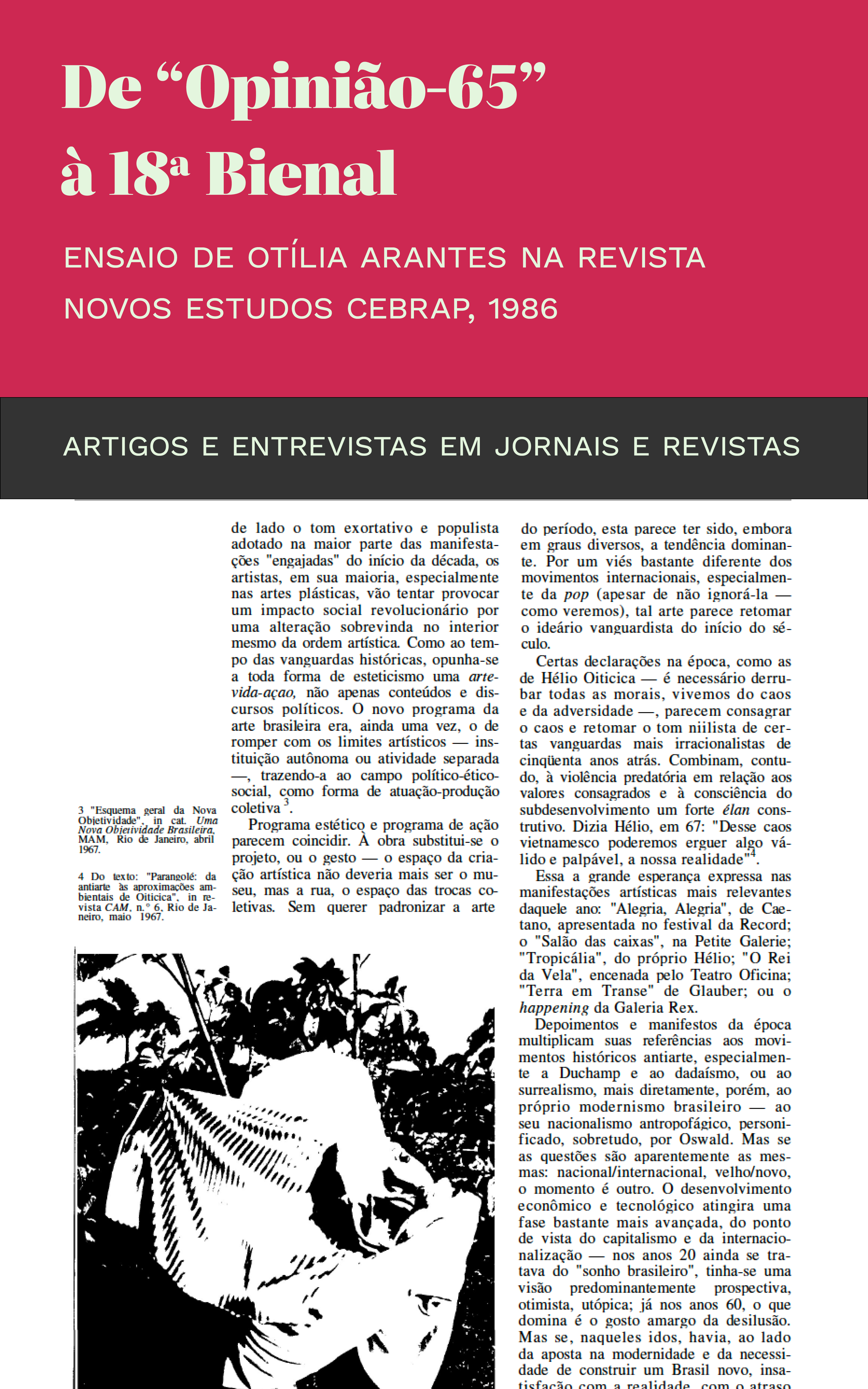From "Opinião 65" to the 18th São Paulo Biennial
1986
Synopsis
Published in 1986, this essay by Otília Arantes proposes a critical review of the visual arts of the 20-year dictatorship period, from “Opinião 65” (Opinion 65), an exhibition that explicitly purported to represent resistance, to the 1985 Biennial, marked by the large corridor devoted to the so-called neo-expressionist paintings, with works by both Brazilian and foreign artists. While the artworks shown in the 1960s were accompanied by neo-avant-garde manifestos and denied any identification with international art—even the American pop art, which was undeniably similar in form, here acquired an openly disruptive and protesting tone—, the works at the 18th Biennial showed an unrestricted adhesion to the internationalization of our art. According to the author’s emphatic warning, the memory of the “Brazilian material” was thereby fading, even though expressionism was perhaps the most suited painting style for our modernity, at least from Mario de Andrade’s point of view. Well, those new expressionists sought precisely to distance themselves from the modernist paintings—also exhibited at the Biennial—which they considered to be a “sub-cubism”, dismissing any kind of Brazilian art to seek inspiration directly from great international artists. In retrospect, this internationalist boom could be explained as being in tune with the illusion of that time: that Brazil was finally catching up with the developed world. The most substantial part of the essay, however, is related to the Brazilian visual arts of the period that lasted from the coup d'état to the Institutional Act Number Five (AI-5), when artists still had some space for a certain “exercise of freedom”, as put by Mário Pedrosa, and intended to use art to make politics. This effort to fight the status quo is retraced by Arantes with a special focus on Hélio Oiticica and the emergence of Tropicalismo with all its “ambivalences”—as seen and preached by Oiticica: adding to the predatory violence, related to enshrined values and the awareness of underdevelopment, a strong constructive élan. A past that was anthropophagically devoured to project us towards the future—a door that was closed, at least temporarily, from 1970 onwards. The return to figuration, to the easel, the well-behaved painting, as well as the critical representation, or “non-representation”, always more indirect, of the artistic creations of that period are compiled by the author to finally reach the revenge of the youth from the 1980s, finishing this reviewing effort in a committed, quasi-manifesto tone.
Keywords: 18th Biennial, Casa7, Rex gallery, Gerchman, Gregório Gruber, Hélio Oiticica, José Resende, Lygia Clark, Mário Pedrosa, Neo-expressionism, Neo avant-garde, New Objectivity, Opinião 65, Malasartes magazine, Roberto Schwarz, Sérgio Ferro, Tropicália.

Downloads
Categories
License

This work is licensed under a Creative Commons Attribution-NonCommercial-NoDerivatives 4.0 International License.


